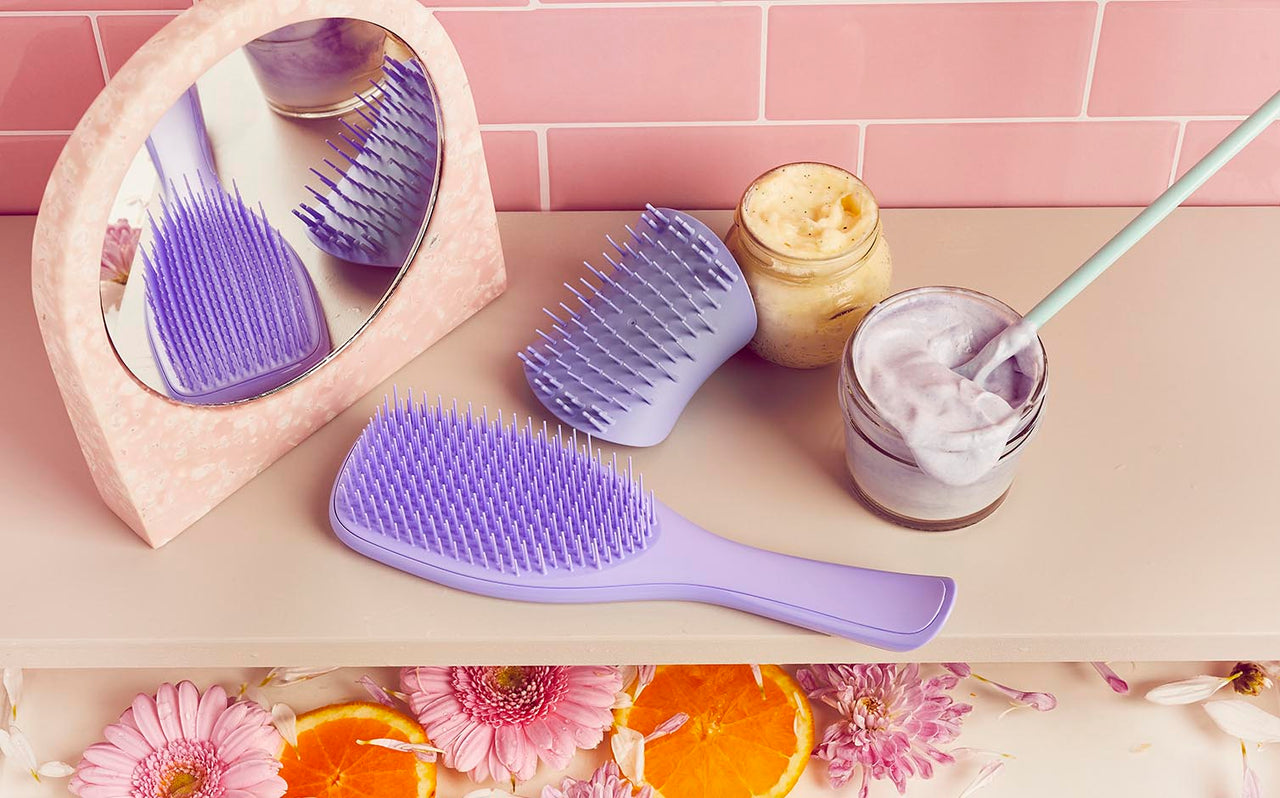We’ve said it before and we’ll say it again; hair masks are an essential in our healthy hair routines. While for some, hair masks can sound like a chore, we see them as therapeutic and a chance to pamper yourself from the comfort of your own home.

With a New Year upon us, there’s no better time to get started on your healthy hair habits and make them part of your regular routine. If you want to know our top tips on how to apply a hair mask, keep reading. And if you’re looking to get a slice of the action for yourself, check out our article on “How to make homemade hair masks”.
What is a hair mask?
It might sound obvious, but a hair mask is what it says on the tin - a mask for your hair. Full of nutritious ingredients, a hair mask works hard to give you optimal shine and health for your locks. The beauty of a hair mask is that you can usually find the ingredients in your kitchen cupboard, and if not, they are cheap to buy. When you consider how little of each ingredient you’ll need, they’ll last you for ages!
A hair mask itself is designed to ensure your hair stays healthy, but the options of hair masks are endless. Depending on what hair concerns you have, there’s usually a hair mask to help it. For example, if your hair is dry and brittle at the ends, you may find coconut oil is what you need in your mask but if you’re looking for a little exfoliation-style mask for your scalp, tea tree or even brown sugar are the ingredients you should reach for. Find out more about ingredients you can use in hair masks here.
What are the benefits of a hair mask?

The benefits of a hair mask are as endless as are the types of hair mask available. Think of all the things you want to improve with your hair; dryness, split ends, product build up, oiliness, heat protection, dullness, volume. There’s a mask for them all. If one of your New Year’s resolutions is to take better care of your hair, a hair mask is a great place to start. The benefits of a hair mask include added shine, boosted volume, less breakage, clearer scalp, removal of build up, softer hair - the list is endless!
Hair care is often forgotten - we wash it, dry it and style it but how often do we really treat it, nourish it or give it some TLC? Cheaper and quicker than a trip to the salon, but just as luxurious, a hair mask is the quickest pick-me-up for your hair.
How to apply a hair mask?
If you’re an avid masker, you may have your own technique lined up. If not, we’ve got you covered. The first tip is to know which hair mask you’re applying and whether this works best on dry or wet hair. Generally speaking, hair masks work the best on clean, towel-dried, damp hair unless there's oil involved. Oil and water do not mix - if you didn’t know this before, you do now. Some argue that dry hair absorbs oil better than wet because of this, so if your mask includes an oil like coconut oil, best to apply when your hair is dry.
Once you’ve picked your mask and you know whether your hair is going to be damp or dry, make sure you wear an old t-shirt when you apply. Hair masks can get messy and we don’t want you ruining your best clothes!
Time to apply:

1. First, section your hair - sectioning clips are your best friend. Take your hair and split it into sections, first section of the top half of your hair, then take the bottom half and split it into two. You should effectively have three sections at this point. If your hair is thicker, divide it into smaller sections.
2. Then, starting at the scalp, use your hands to guide your mask down your hair. Of course if your mask is to focus on split ends, then concentrate on that area only. If your mask is to refresh and nourish your hair, start at the root and work your way down. Do this for each section.
3. Nobody likes tangles, especially us! Use our Wet Detangler and slowly guide it through the hair. Not only does this remove any tangles, it ensures the mask is fully pulled through each strand of hair. You can’t let any little strands miss out on the treatment!
4. Bake away! Cover your hair with a shower cap or plastic wrap - cling film works too! The purpose of this is to let the mask sink into the hair whilst remaining slightly warmer than room temperature. Sit and relax whilst the mask works its magic - but with a towel around your shoulders just in case of any drips. You’ll need to leave your hair for roughly 15-25 minutes depending on the condition of your hair.
5. Rinse - this is self explanatory. Rinse your hair to wash the mask out, it may take 2 or 3 washes but it’ll get there, just keep rinsing.
6. Now all you need to do is towel dry your hair and style it to your desired look. By this point you and your hair will be feeling your best selves!
How often should a hair mask be used?
It really is up to you. However, if hair masks are part of your new year routine, a good starting point is once every 4 weeks, depending on the condition of your hair. If you’re just starting out, this is a good average but you may find that your hair needs these more often or sometimes less. Remember how good a mask is for your hair so try to not wait too long in between treatments - consistency is key!
Is it possible to leave a hair mask on too long?
It is, but it’s not going to do any damage to your hair - don’t worry. If you’ve put your mask on and fallen asleep, you will be fine! Some people prefer to do their masks overnight. Your hair may, at most, take a little longer to wash the mask out but that is as disastrous as it can get. If your hair is in bad condition, a longer mask might be an essential, but if you’re pressed for time there is no need to leave masks in for longer than 15-25 minutes.
Great ingredients that work well in hair masks.

We’ve got the handy ingredients that you should keep stocked in your cupboard for your future mask-making sessions:
The oils - olive, coconut, argan and aloe vera. Coconut is a fan favorite for masks.
Honey - you might second guess this one due to its sticky nature but it’s an essential
Avocado - full of nutrients for your body and hair
Banana - nourishing and delicious
Mayonnaise - yes, mayonnaise! We know you may be wary but trust us on this one
Extras: Apple cider vinegar, Peppermint oil, Castor oil, Brown sugar
You don’t need the entire list, but these are just some of our key ingredients that we recommend for hair masks. For inspiration on how to put these together, take a read on how to make homemade hair masks and let your creativity run wild in your new year, new you, new do vibe!

You’ve read about how to use a hair mask and hopefully checked out our page on how to make homemade hair masks, so what are you waiting for? You probably have a list of New Year resolutions, so let your hair be one of them. There's no better feeling than knowing you have refreshed and treated your locks with your own treatment.











